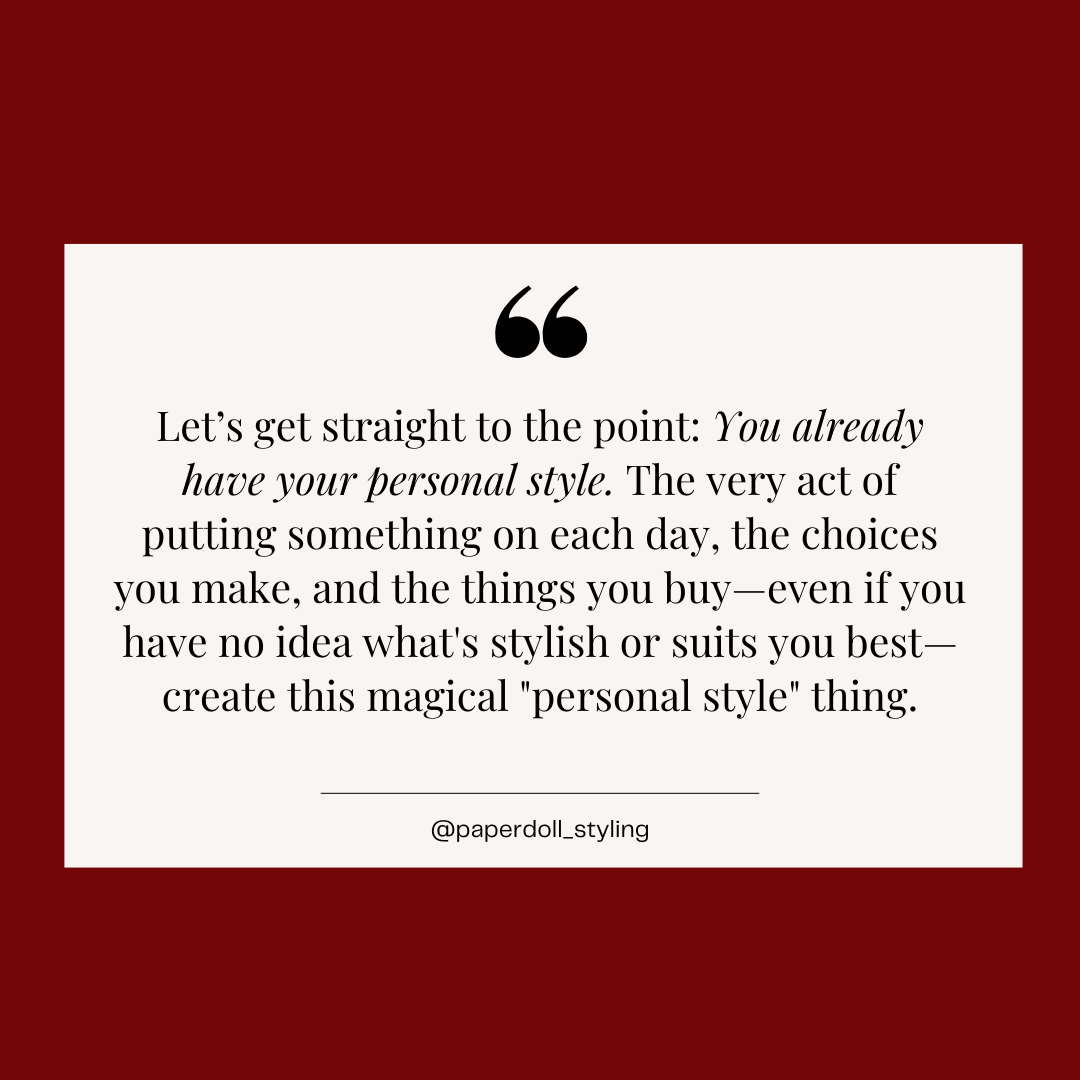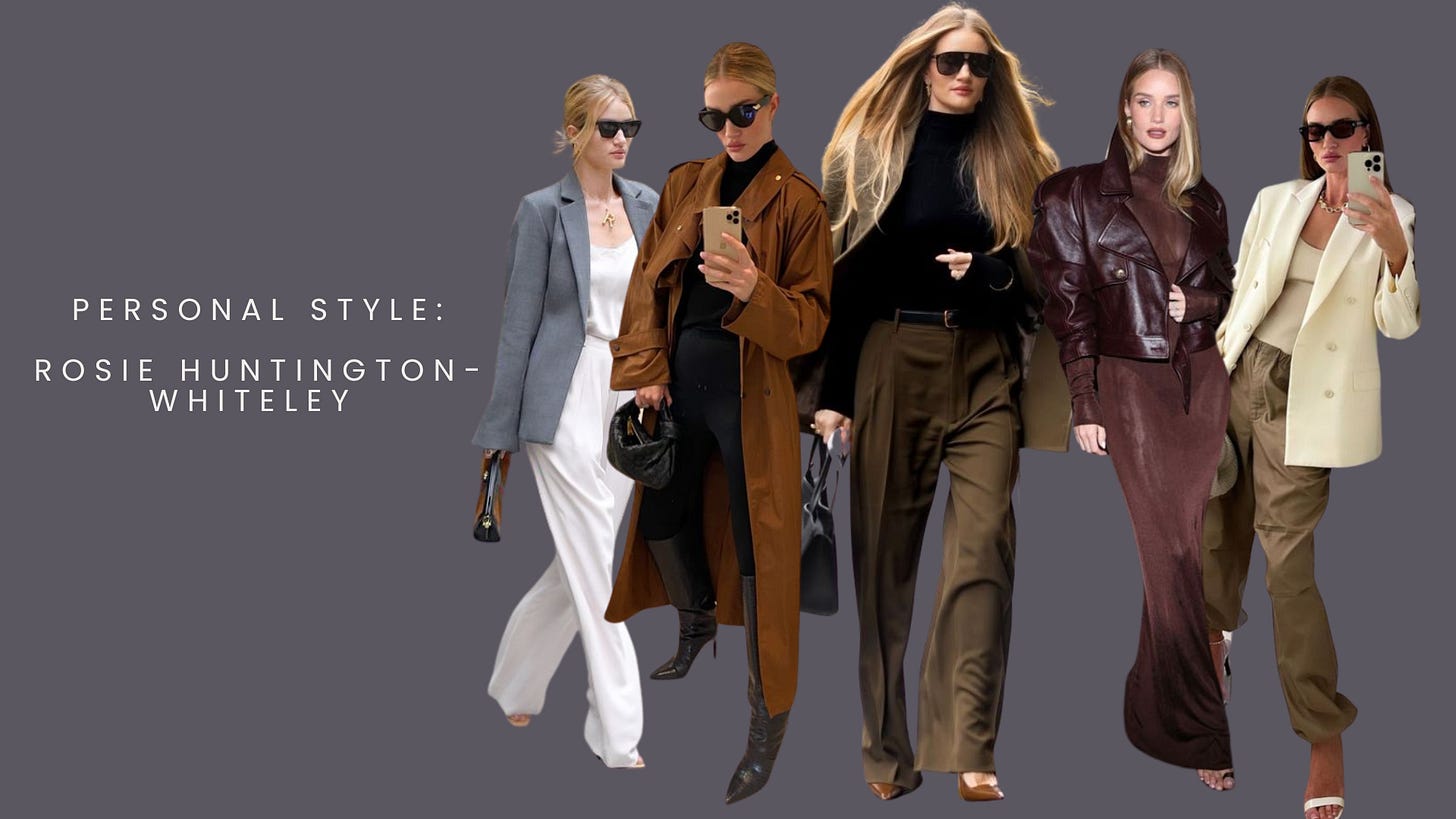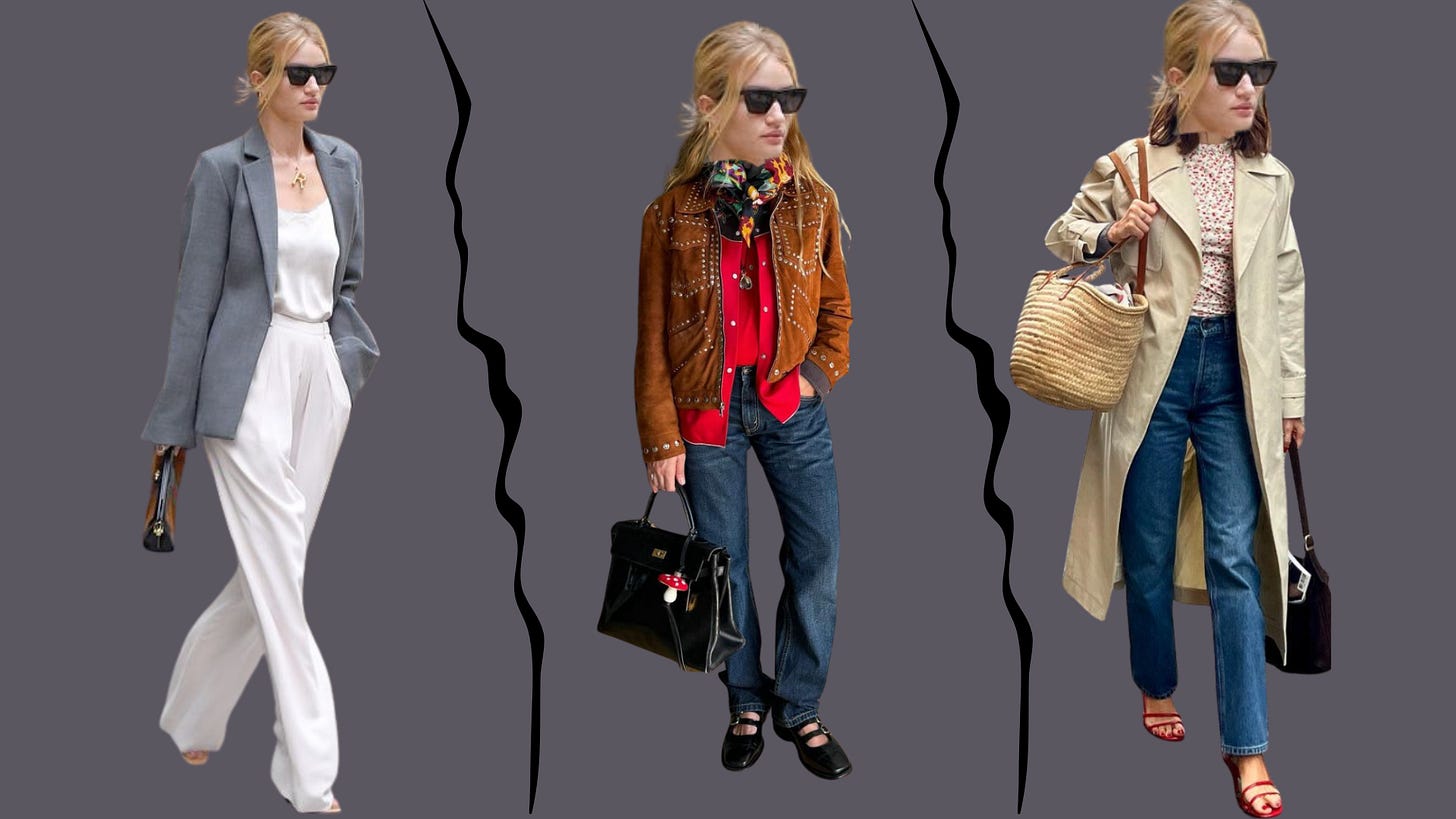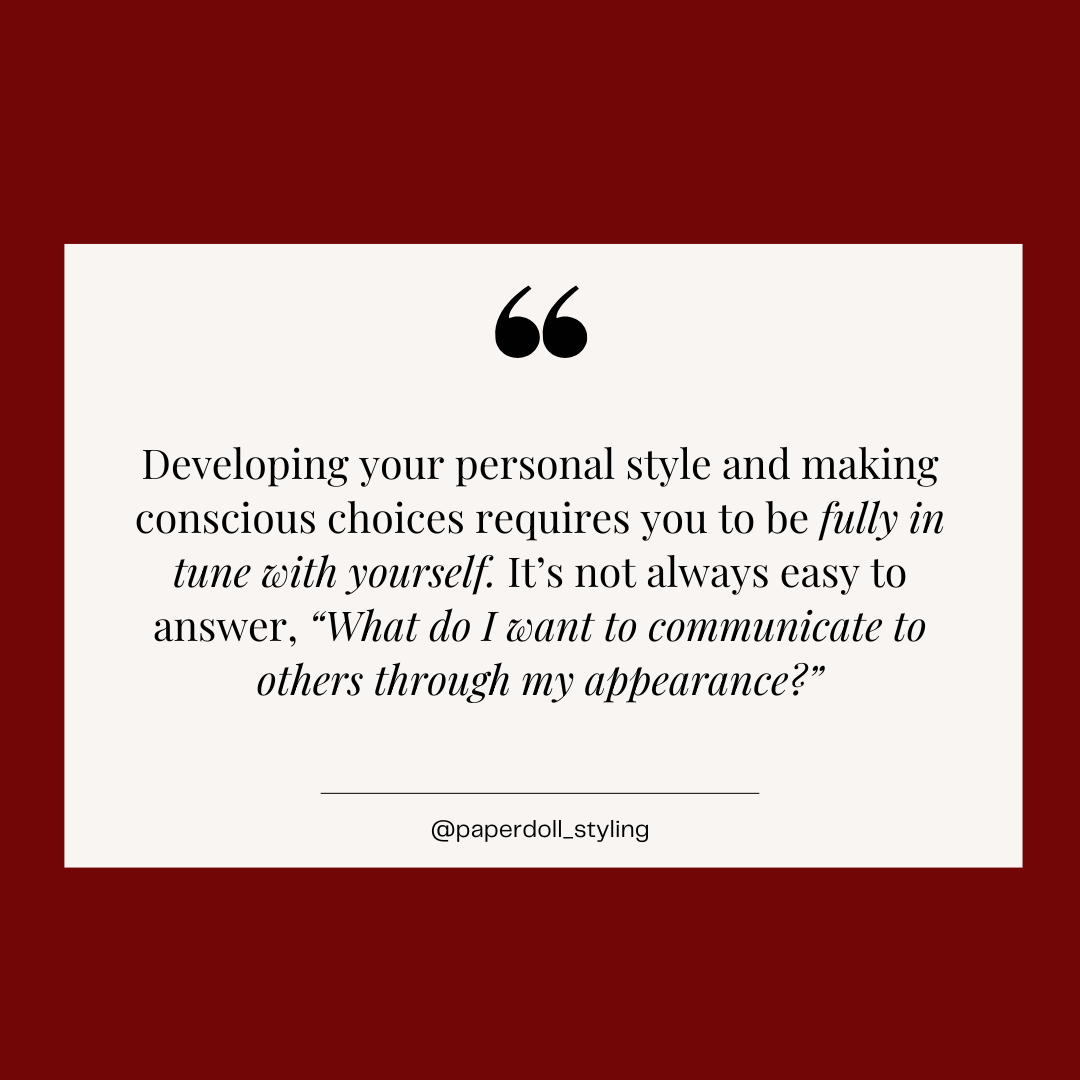What is my personal style, anyway, and how do I “develop” it?
Do you really need to bother yourself with it, or you can feel good in your clothes without this "personal style" non-sense. I answer here.
Let’s get straight to the point: You already have your personal style. The very act of putting something on each day, the choices you make, and the things you buy—even if you have no idea what's stylish or suits you best—create this magical "personal style" thing.
Does personal style mean wearing something unique that sets you apart from everyone else? No. Personal style doesn’t mean you need to find something so unique that it identifies only you and nobody else. In fact, even people who consider themselves fashionistas with great personal style...well, rarely do they look that unique. And that’s okay! Your personal style is a collection of visual cues that help others understand a bit about you. It also helps you connect with people who share common ground.
What separates people in terms of their personal style is how intentional they are when choosing what to wear. Even though you already have a personal style, there are ways to develop it. So, let’s break down some key elements that create your personal style:
Your lifestyle
The environment you live in
Your personality, priorities, and goals
The first one is pretty straightforward: your lifestyle dictates what you wear. Even if you’re not thrilled about office wear, it’s still part of your personal style if you need to show up at the office 5 days a week —whether you like it or not.
The environment, by which I mean both the climate and society you live in, also shapes your style. Typically, when we get dressed, we want to look appropriate—and "appropriate" is a relative term, usually defined by 1) the society we live in and 2) the circumstances we’re in.
As social beings, we often want to belong to a group, and in most cases, we try to align with how those around us dress.
Finally, your personality, values, and interests play the most significant role in defining your style. Sometimes this is clearly expressed through logos or slogans on clothing—political or social statements, for example. Other times, it’s more subtle.
How to wear different things but still feel like yourself
The interesting thing about personal style is that regardless of what type of clothing you put on—whether it’s a skirt or jeans—you still exude your vibe. It’s not about wearing the same thing repeatedly or even about specific color choices (although colors can definitely be part of your personal style); it’s more about how you mix and match your clothes and the consistent way you style them.
Take, for example, Rosie Huntington-Whiteley. Whether she’s in a skirt, a dress, a blazer with jeans, or a jacket, you still see her personal style code: sharp, feminine, powerful, and minimalistic. The same is true for Blanca Miró and Jeanne Damas.
They each have a beautiful sense of style because they know who they are and how to show it to the world. Imagine if Rosie Huntington-Whiteley wore her usual style one day, then the next day dressed in Blanca Miró’s style.
Weird, right?
It’s not that it wouldn’t look good on her, but it would feel... confusing, leaving us wondering, “So, who are you?” That’s why I believe it’s so important to understand yourself and how to work with your own image.
Pay attention. Reflect. Analyze.
When I work with clients, I pay close attention to who they are: What are they like? What are they interested in? What are their values? All of this helps me choose the right style direction, the one that makes them say, “You nailed it with your outfit suggestions!”
Developing your personal style and making conscious choices requires you to be fully in tune with yourself. It’s not always easy to answer, “What do I want to communicate to others through my appearance?” And even when you know what you want to convey, how do you achieve it?
If you’re not working with a stylist, one way to figure out how to express yourself through clothing is by analyzing other people’s styles and pinpointing some of the adjectives that describe their style whenever you like some outfits. When you browse Instagram or Pinterest and save outfits, don’t mindlessly add them to your “favorites.” Analyze them! Being inspired means knowing what inspires you. So, ask yourself: What do I like about this outfit? What adjectives would describe this look? Do I want to project a similar image?
Understanding your personal style will allow you to:
• Be better at adding new items to your wardrobe
• Feel more comfortable and confident in what you wear
• Ignore what others might think of your style because you know the rationale behind your outfits and why you choose certain pieces (which, again, boosts your confidence)
• Attract like-minded people
When analyzing your most favorite outfits, you will start noticing how some words repeating themselves. These are your main cues. Honestly, I think it’s a very fun exercise. It’s definitely not something you should get stressed about! Approach it with curiosity and an open mind. Perhaps, you would find something surprising about yourself?








